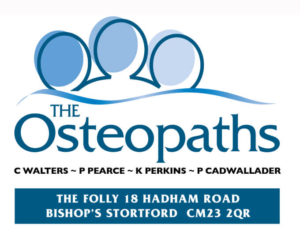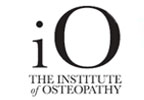Frequently Asked Questions
We hope that by browsing through The Osteopaths Walters~Pearce~Perkins~Cadwallader website, you will find out a great deal about Osteopathy and other services we offer.
However, from talking to patients over the years, we have found that a number of questions arise again and again. We have tried to answer these below, but if you find your particular query is not dealt with, please contact us.
How many times will I need to come?
This depends on the diagnosis of your particular problem. Some problems are very painful, and are simple to resolve, therefore the patient may only need one or two sessions. Other people find they feel very much better after a few treatments and because of the nature of the problem or, perhaps due to the type of job that they do, regular treatment every few months helps them maintain a good quality of life and can prevent problems becoming severe.
At your initial consultation your Osteopath should be able to indicate how much treatment is likely to be needed, or, in some cases, certainly on your follow up visit when they have been able to see how you respond to your first treatment.
Am I too old to see an Osteopath?
No, at The Osteopaths Walters~Pearce~Perkins~Cadwallader we have successfully treated many patients in their 80s and 90s. Many now regularly consult us for treatment as Osteopathy may help to ease the accompanying symptoms of osteoarthritis.
Is Osteopathy suitable for children?
Yes, very gentle techniques can be used to treat all ages, from newborn babies to young adolescents. Please see ‘Our Services’ page for information on Cranial Osteopathy.
Can I see an Osteopath whilst I am pregnant?
Yes, Osteopathy is probably the treatment of choice for musculoskeletal pain during pregnancy as both medication and bed-rest are not advised.
Low back and pelvic pain in particular are very common in pregnant women, given the increased weight and postural changes that occur. Additionally, hormones are released in pregnancy causing ligament laxity enabling the pelvic joints to loosen and the birth canal to widen. These hormones are released surprisingly early in pregnancy, so that joint strains of all kinds are much more common than at other times, and should respond quite readily to Osteopathic treatment. There is no evidence to suggest that Osteopathic treatment is in any way dangerous to the unborn child, nor that it can bring on a miscarriage.
Please do not hesitate to contact us to discuss any concerns you may have.
Do Osteopaths treat feet and other parts of the body?
Yes, Osteopathy can treat any problem arising from the musculoskeletal system i.e. all joints, ligaments and muscles of the body, including the feet. Full appreciation is often not given to the importance of caring for our feet, despite the fact that they carry our full body weight and many people spend much of their day standing. The Osteopaths Walters~Pearce~Perkins~Cadwallader offer custom made functional orthotics that correct your specific foot imbalance. Please see ‘Our Services’ page for more information on Orthotics and Podiatry.
What is the difference between an Osteopath and a Chiropractor?
The philosophy of the approach differs with diagnosis and treatment management. However, Osteopaths and Chiropractors have very similar backgrounds in terms of training and qualifications necessary to practise professionally and are equally skilled in treating problems arising from the musculoskeletal system.
What is the difference between an Osteopath and a Physiotherapist?
Although many Physiotherapists work outside the hospital field in private practice, their training tends to focus on hospital-based work, giving them a greater expertise in the areas of rehabilitation following trauma or post-surgery.
Please note that the answers to the questions above are the opinion of the author alone. The Osteopaths Walters~Pearce~Perkins~Cadwallader.




